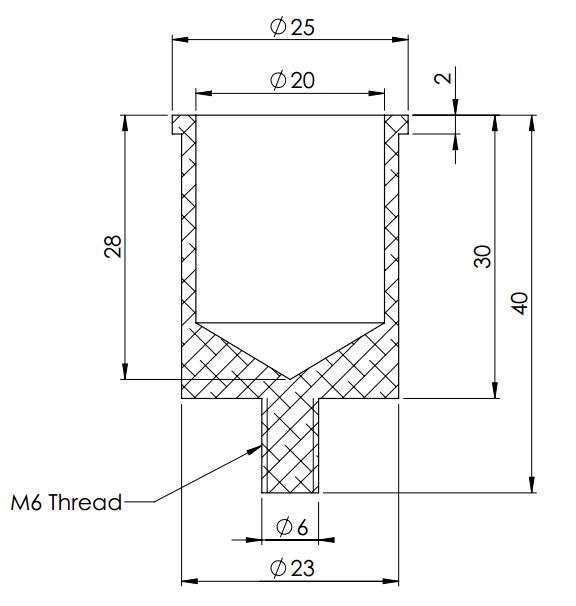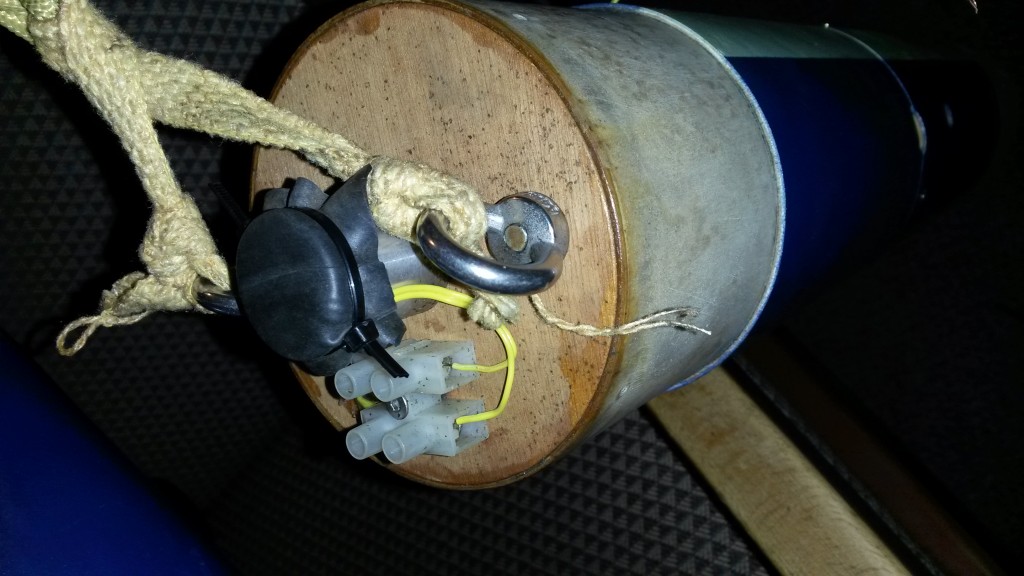The standard in model rocketry is to use a small (about 2 grams) black powder (BP) charge to deploy the parachutes. The black powder can be ignited with an e-match which can be fired from a flight computer. The rapid combustion produces hot gases which pressurise the sealed parachute bay causing the rocket to separate at a specially designed section.
Smokeless powder (SP) has been designed as a replacement for BP in firearms
applications. It does not require an explosives license where as BP does, which makes its use attractive. However the chemistry of SP is quite different to BP, in particular its reaction rate is far more sensitive to pressure. When used as an ejection charge the powder is far less contained than in the barrel of a gun.
After learning this I made some aluminium charge holders. The first one had an internal diameter of 7mm, this proved too small as the holder was fired through the 5mm plywood bulkhead during the deployment test. The second version had the below dimensions. I made up a charge with the tip of the e-match positioned at the bottom, about 2 grams of SP, masking tape acting as wadding and a section of old inner tube cable tied over the top as a burst diaphragm. The ground test worked perfectly. As it was a launch day I jumped in the car and headed to the launch site where I made up 3 identical charges (one for the drogue, two for the main). But the main failed to deploy. Both charges had fired but had not produced enough pressure to break the shear pins. On closer inspection of the failed charges the inner tube (burst diaphragm) had slipped past the cable tie rather than rupturing. This must have reduce the containment just enough to curtail the combustion.
In conclusion SP can be used for rocket deployment charges but it is very sensitive to how it is confined. Black powder is much more forgiving and is a much more suitable explosive, a suitable license is not hard to get.

